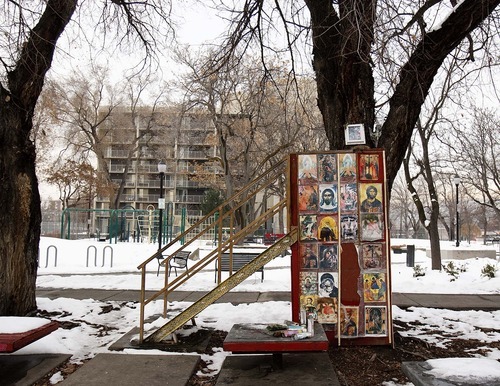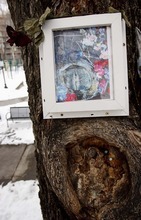This is an archived article that was published on sltrib.com in 2010, and information in the article may be outdated. It is provided only for personal research purposes and may not be reprinted.
Beginning in May 1997, throngs of believers flocked to the site of an American elm in Salt Lake City to see an image they believed was the Virgin Mary.
It was likely the first and certainly the most well-publicized Mary sighting in Utah.
Standing on the edge of Taufer Park, 700 S. 300 East, the tree soon was festooned with flowers, crosses and candles. Worshippers ascended a set of stairs erected to reach the knothole, nine feet above the ground. Some kissed or stroked the image, which was said to "weep," or emit liquid.
It had a special appeal to Latino Catholics, who said the image, created on a flat knothole when a large branch was cut off by city workers, resembled Mary as she appeared in an apparition in 16th-century Mexico, which became known as Our Lady of Guadalupe. She usually is depicted with head bowed and covered in a long cloak.
In Utah's "Mary Tree," as with many others, the image essentially was an outline.
Then, in May 2002, a vandal chiseled out a gaping hole where believers said the virgin once appeared. Seven years later, another attacker tried to light the stairs on fire.
Now, a photograph of the lost Mary, embedded in Plexiglass and surrounded by flowers, is attached to the tree above the defaced knothole.
The Catholic Diocese of Salt Lake City never investigated supernatural claims related to the tree, nor has it had any plans to do so.
Peggy Fletcher Stack







